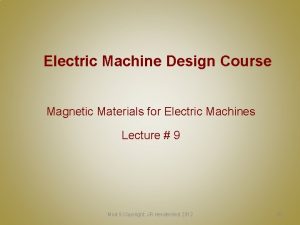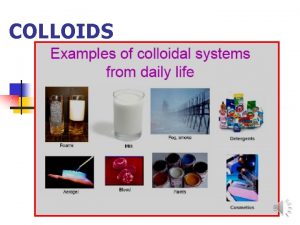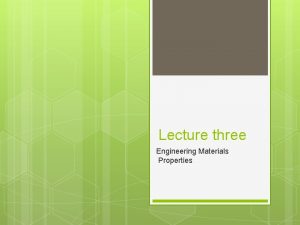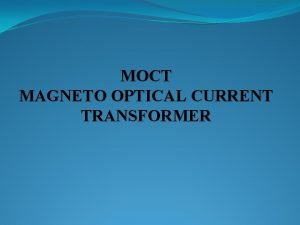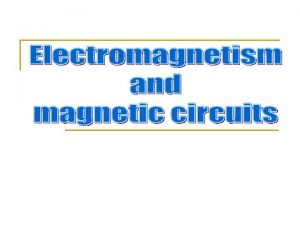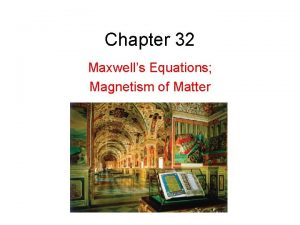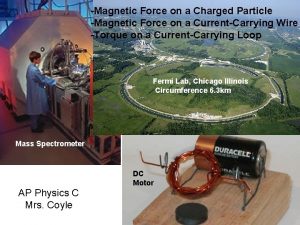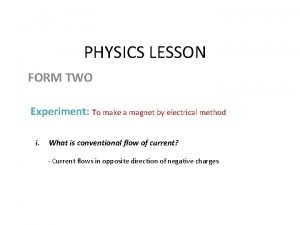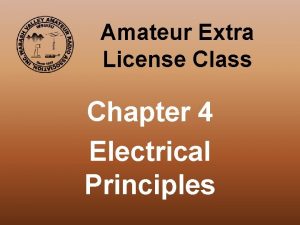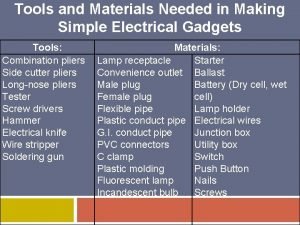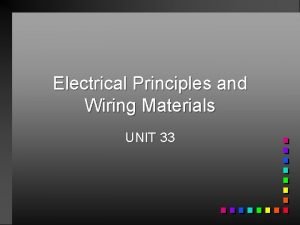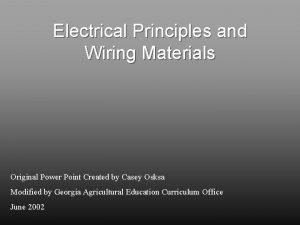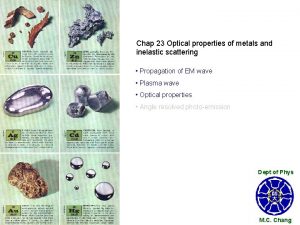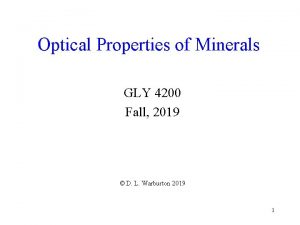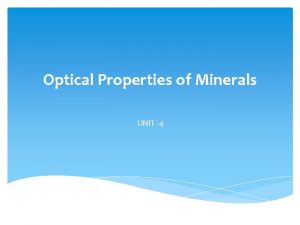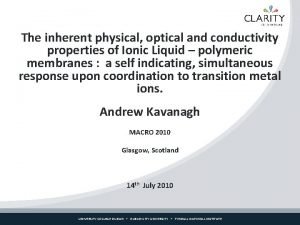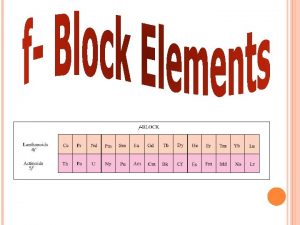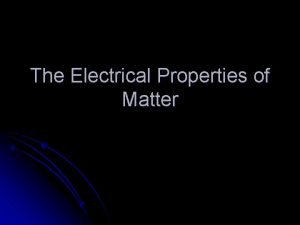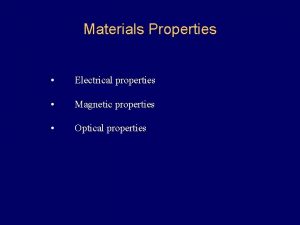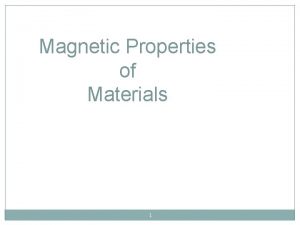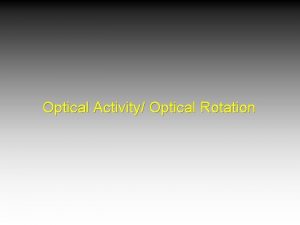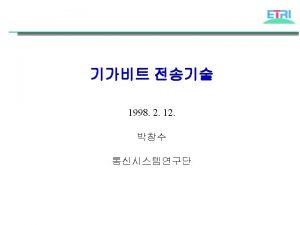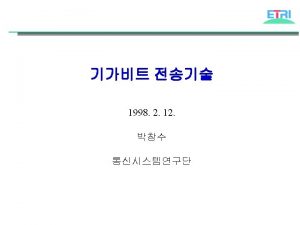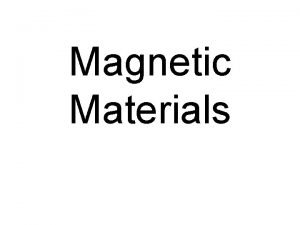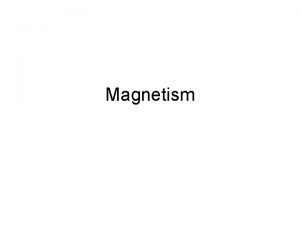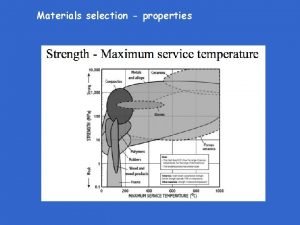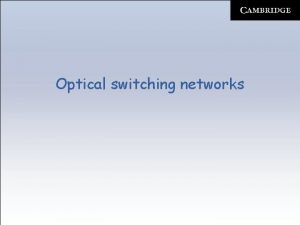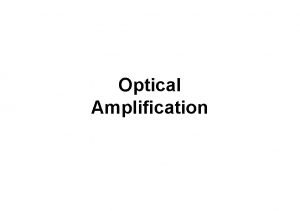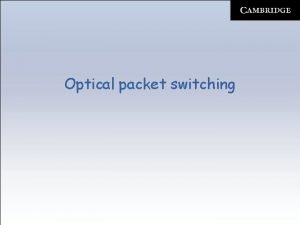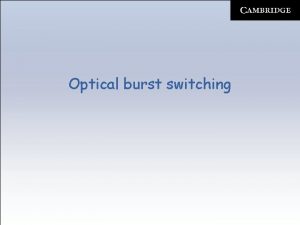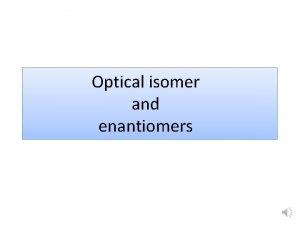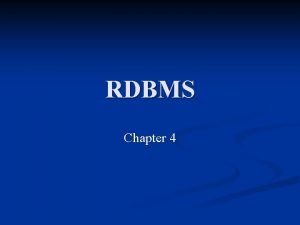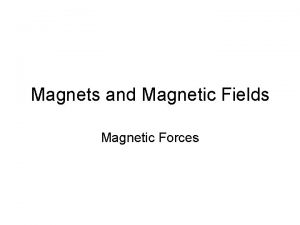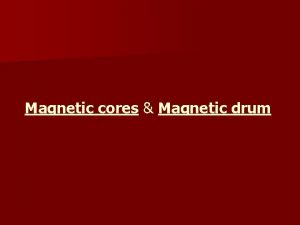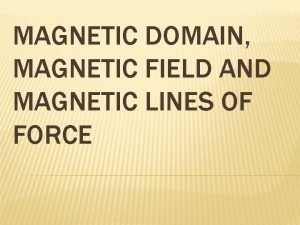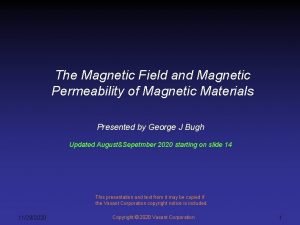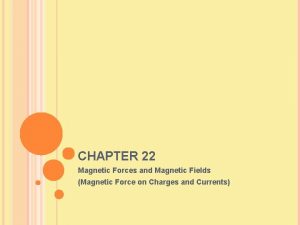Materials Properties Electrical properties Magnetic properties Optical properties



























- Slides: 27

Materials Properties • Electrical properties • Magnetic properties • Optical properties

Electrical properties • • Ohm’s law Resistance, resistivity, conductivity • Matthiessen’s rule

Electrical resistivity

Energy bands discrete energy levels (Pauli exclusion principle) K L M splitting into energy bands (N=12)

Electron Band Structures energy conduction band gap EF valence band EF metal (e. g. Cu) metal (e. g. Mg) isolators (Egap>2 e. V) semiconductors

Conductors EF

Semiconductors (intrinsic) band gap

n-type Extrinsic Semiconductor

p-type Extrinsic Semiconductor

The p-n Diode reverse bias forward bias

Magnetic properties • Magnetic field strength, magnetic flux density, magnetization, permeability, and magnetic susceptibility

The Magnetic Field vacuum atmosphere/material

The Magnetic Moment orbital contribution => mlµB Bohr magneton: µB=9. 27 x 10 -24 Am² spin contribution => +/-µB

Diamagnetic Materials

Paramagnetic Materials

Ferromagnetic Materials

The B-H Hysteresis remanent flux density coercive force

Hard and Soft Magnetic Materials soft: alternating magnetic fields hard: permanent magnets energy product coercivity

Magnetic Storage magnetic field: induces electric current coil: magnetic field in gap

Optical properties • Transmission • Refraction • Absorption

Electro magnetic waves light = electromagnetic wave electric field E magnetic field H (perpendicular to E) wave: c=ln (const. light velocity in vacuum=300, 000 photons: E=hn (Planck constant, 6. 63 x 10 -34 J/s)

Light Interaction with Solid I 0=Itransmitted+Iabsorbed+Ireflected transparent translucent opaque heat reflection (metals): absorption (electrons excitation by DE) => re-emission of photons color (e. g. Au, Cu => only partial re-emission) refraction: transmission into transparent material => decrease in v (n=c/v), bending at interface

Absorption Itransmitted=I 0(1 -R)2 exp(-bx) reflectivity Ireflected absorption coefficient Iabsorbed Io x (transparent medium) Itransmitted

Photon Absorption in a (Semiconducting) Solid 1. hole/electron pair generation 2. hole/electron pair generation in between colored!! Egap, max=hc/lmin (>3. 1 e. V no visible light absorption=transparent) e. g. red ruby Al 2 O 3 with Cr 2 O 3 Egap, min (lmax, visible=700 nm) (<1. 8 e. V all visible light impurity levelabsorbed=opaque) in the band gap

Light Transmission in Al 2 O 3 single crystal: transparent poly-crystal: translucent with 5% pores: opaque internal reflection/refraction at grain/phase boundaries – pores polymers: scattering at boundaries betw. crystalline/amorphous regions

Effects/Applications luminescence absorbing energy => re-emitting visible light (1. 8 e. V<hv<3. 1 e. V) fluorescence (<1 s) phosphorescence (>1 s) e. g. TV (fluoresc. coating) LED (forward bias diode – recombination=> light) photoconductivity illumination => generation of charge carriers e. g. light meters, solar cells optical fibres 1/0 impulses – high information density 24000 telephone calls by two wires e. g. 30000 kg Cu corresp. to 0. 1 kg high-purified Si. O 2 glass

Laser Concepts (light amplification by stimulated emission of radiation) 1. 2. 3. 4. Xe flash lamp excite electrons from Cr 3+ ions large number of electrons falls back to intermediate state after approx. 3 ms: spontaneous emission – triggers avalanche of emissions photons parallel to the rod are transmitted to the semi-silvered end monochromatic, high-intensity coherent red beam
 Magnetic materials used in electrical machines
Magnetic materials used in electrical machines Tyndall effect is an optical property.
Tyndall effect is an optical property. Optical properties of engineering materials
Optical properties of engineering materials Disadvantages of current transformer
Disadvantages of current transformer Remanent magnetization
Remanent magnetization Units of magnetic flux density
Units of magnetic flux density Magnetic moment and magnetic field relation
Magnetic moment and magnetic field relation Magnetic force particle
Magnetic force particle Distinguish between magnetic and nonmagnetic materials
Distinguish between magnetic and nonmagnetic materials Distinguish between magnetic and nonmagnetic materials
Distinguish between magnetic and nonmagnetic materials Whats a magnet
Whats a magnet What are the materials
What are the materials Electrical wiring materials
Electrical wiring materials Unit 33 electrical principles and wiring materials
Unit 33 electrical principles and wiring materials Natural materials
Natural materials Useful to harmful materials
Useful to harmful materials Man made map
Man made map Differentiate adopting materials and adapting materials
Differentiate adopting materials and adapting materials Direct materials budget with multiple materials
Direct materials budget with multiple materials Optical properties of metals and nonmetals
Optical properties of metals and nonmetals Optical properties of minerals
Optical properties of minerals Properties of amino acids
Properties of amino acids Perpendicular
Perpendicular Inherent optical properties
Inherent optical properties Magnetic properties of lanthanides
Magnetic properties of lanthanides Magnetic properties of nanomaterials
Magnetic properties of nanomaterials Properties of nerve fibres
Properties of nerve fibres Electrical properties of matter
Electrical properties of matter
